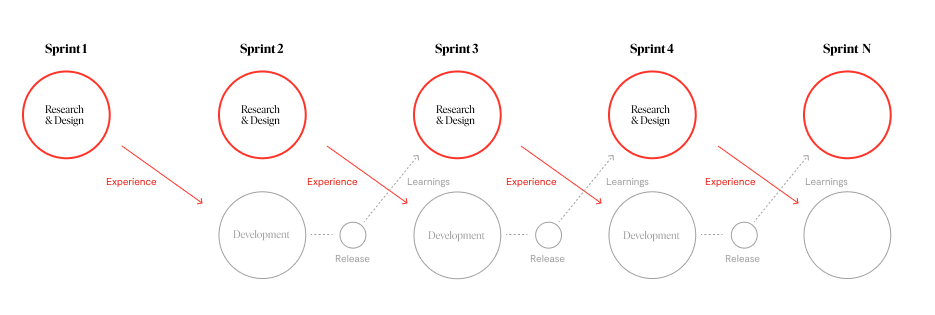To select the appropriate methodologies for a project, we must consider the company’s goal and its digital roadmap.
In recent years, we have seen a growth in new technologies that have shown to be the ideal allies for corporate innovation. The current problem is in selecting the most appropriate methodology for the project to be tackled, taking into account the company’s goal and the digital roadmap that has been developed to achieve it, and knowing that each phase would require one approach or another.
In this sense, firms that want to innovate and drive cultural change must dream large but start small with real projects, small pilots from which to learn and scale throughout the company, leaving the learnings for the team.
The first stage is to assess a company’s current situation
To understand what techniques must be used in an innovation process, we must begin with a Discovery phase that provides us with our present understanding of a company and the skills it possesses to contrast it in a framework.
This phase is critical for determining where a company stands in terms of innovation, what assets it has, and what it might potentially achieve. It is critical to fully comprehend the organization’s maturity in order to understand how it might evolve from there.

We have three distinct steps to carry out a Discovery process in a Digital Transformation project: Understand, Diagnose, and Prioritize. These stages indicate the measures that must be taken to go from one phase to the next, and they will always be carried out under the umbrella of corporate culture and the need for transformation. The result will be the MVP definition.
The clarity of recognizing where the obstacle is and where you wish to go stems from this initial assessment. To do this, action roadmaps are established and contrasted with opportunity maps to determine which are the first pilots to work on, defining a first MVP, based on the effort-impact axis.
Running a pilot: agility to make mistakes fast, learn and improve
Once the pilots are defined, self-managed squads that lead the MVPs forward and have internal coaches to support dimension growth programs must be formed. The mentality is simple: be agile, make mistakes quickly, learn, and grow. Agile techniques are founded on a mentality that is defined by three fundamental principles: 1) Provide value as soon as possible; 2) Have a positive impact on the business; and 3) Continue to learn and develop.

Graphic defining the work model of a Squad, which is organized in weekly Sprints and includes two tracks: Research & Design and Development.
Agile methodologies will enable us to progress in weekly or biweekly iterations, allowing us to improve our work and steer it to early value delivery. The design track establishes the information architecture as well as the interface and interaction design within each Sprint, evaluating each decision with real users to ensure the development of a viable and relevant product. This will allow the development track to implement more quickly and efficiently. Both tracks compliment each other in a way that allows us to measure and learn from each release in order to include the improvements in the following version.
Adapt and scale: consolidating methodologies and creating a new mindset
At this stage, and based on the lessons learned from the pilots, it is time to rethink the change strategies and prepare the organization in terms of culture and change adoption.
To accomplish this, it must work in two ways:
- Define the new tools that will be integrated into the daily work routine. The team must incorporate the new approaches and technologies into their regular work in order to participate in future, more ambitious trials with various teams. The goal is to keep learning and enhancing new tools and ways of working from a mindset that promotes innovation in the organization.
- Define who should drive the transformation projects and who should provide assistance. Individuals that are responsible for delivering this mentality shift to the entire organizational structure, from the managerial layer to the work teams. Internal coaches should be trained in team formation. All of this, while having the assistance of other areas like Finance, IT, People, etc.
If you want to learn more about how Multiplica can help you stay relevant through innovation, download our Soft eBook: “Technology: Innovation and Scalability Driver” or contact Lucio Grimaldi, Tribe Leader US at Multiplica.